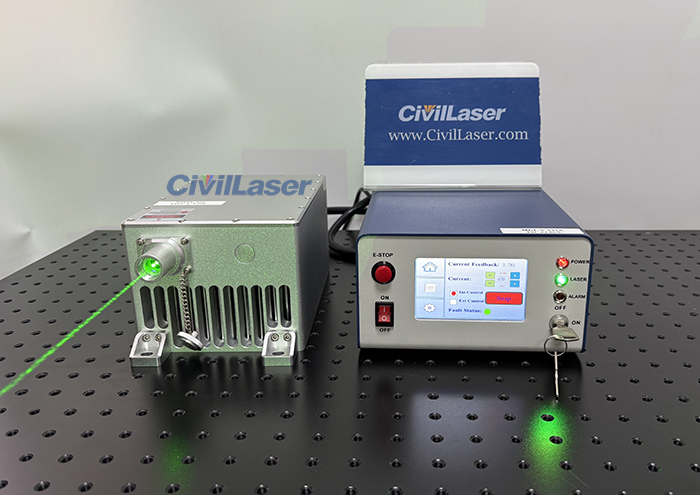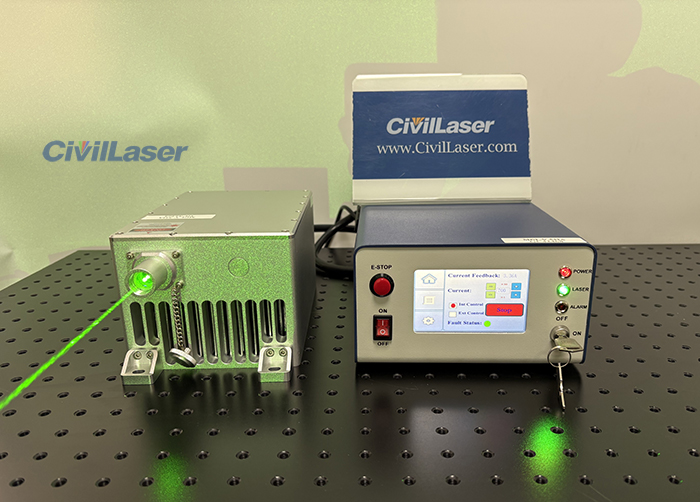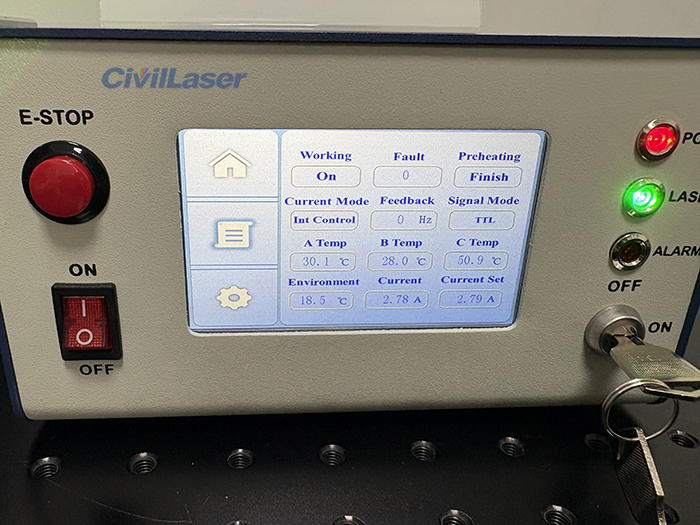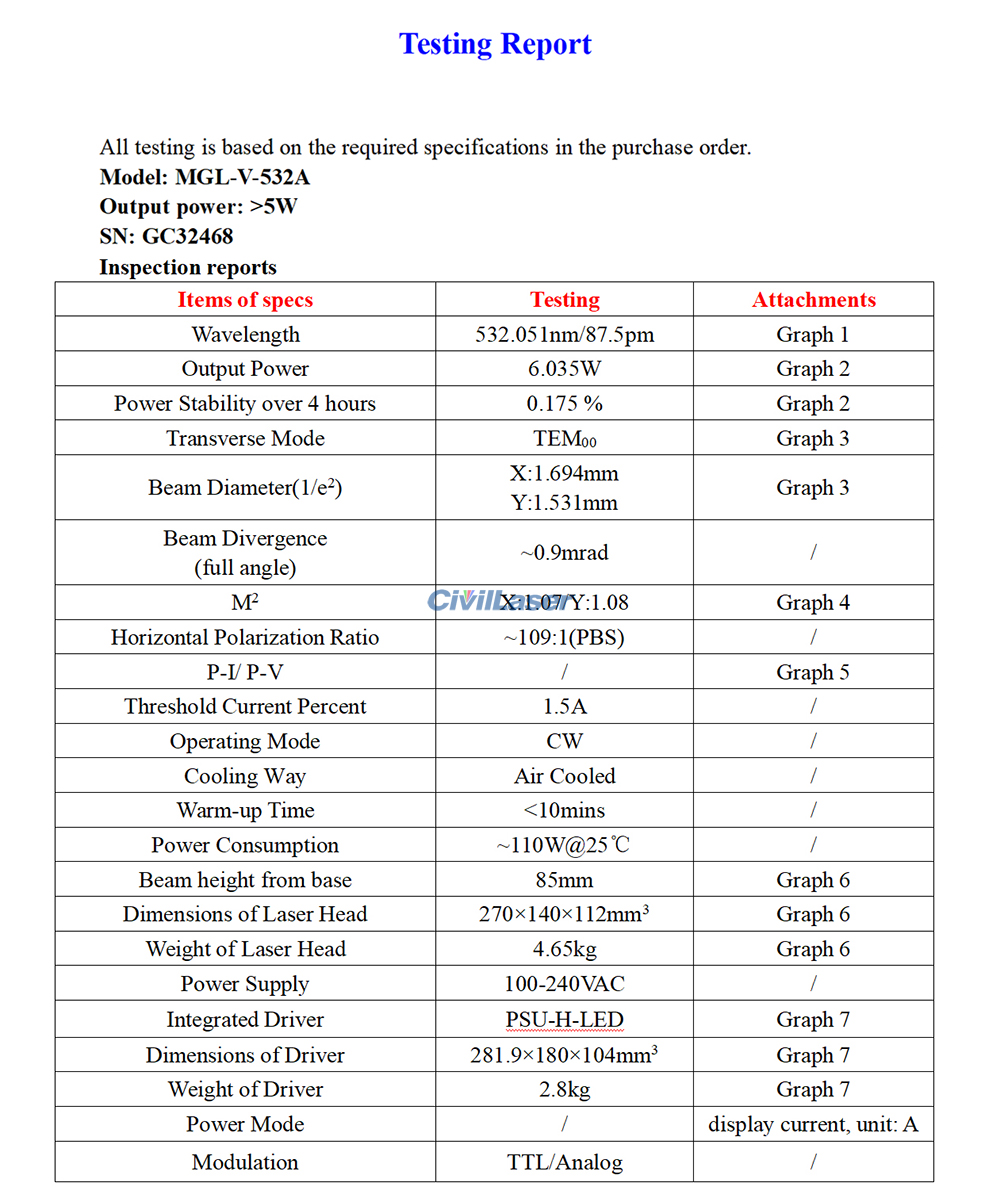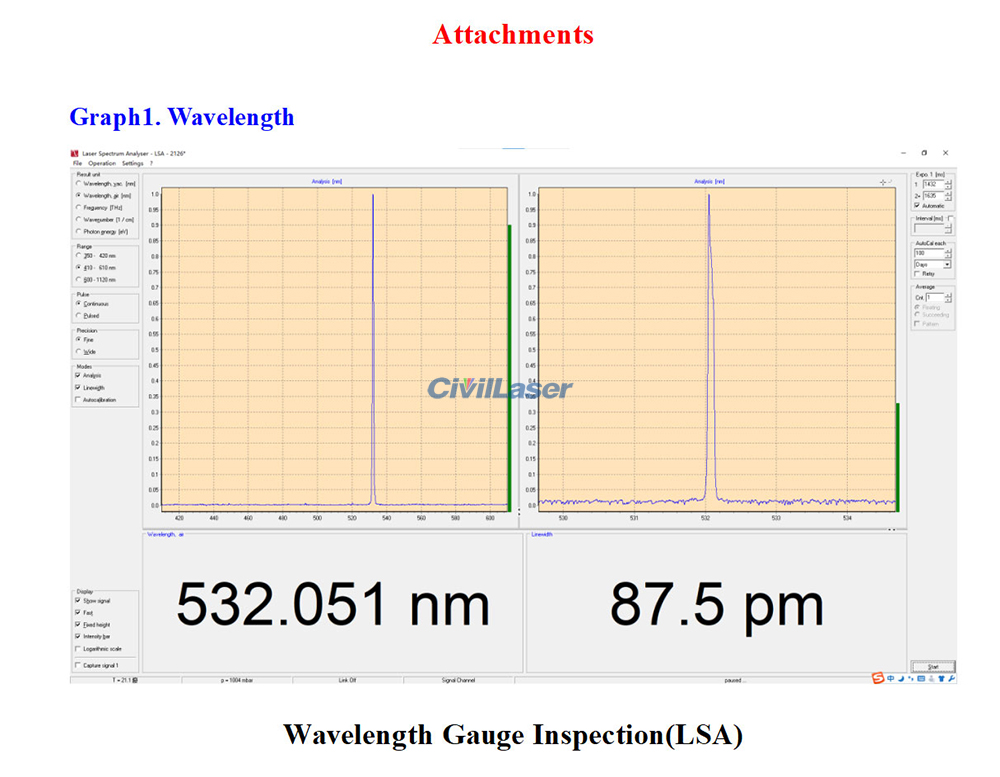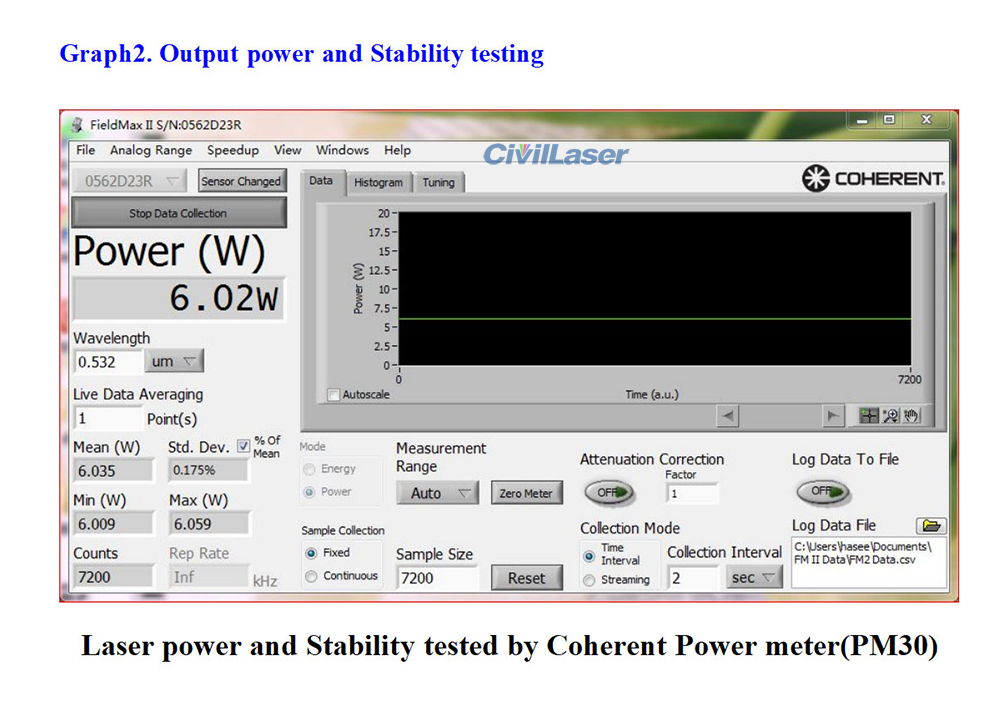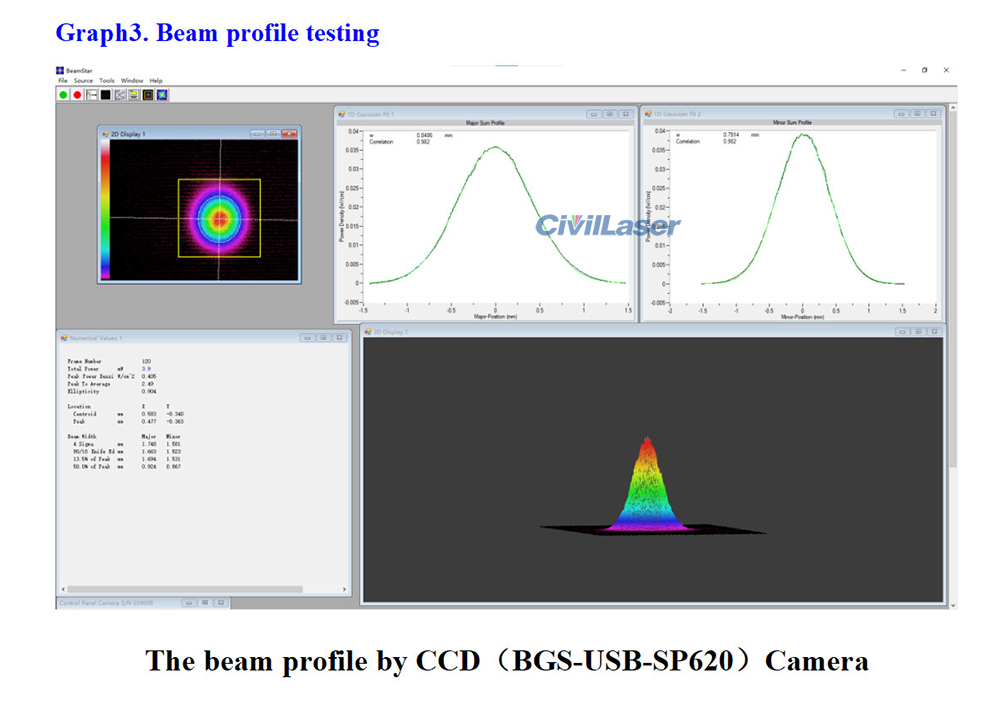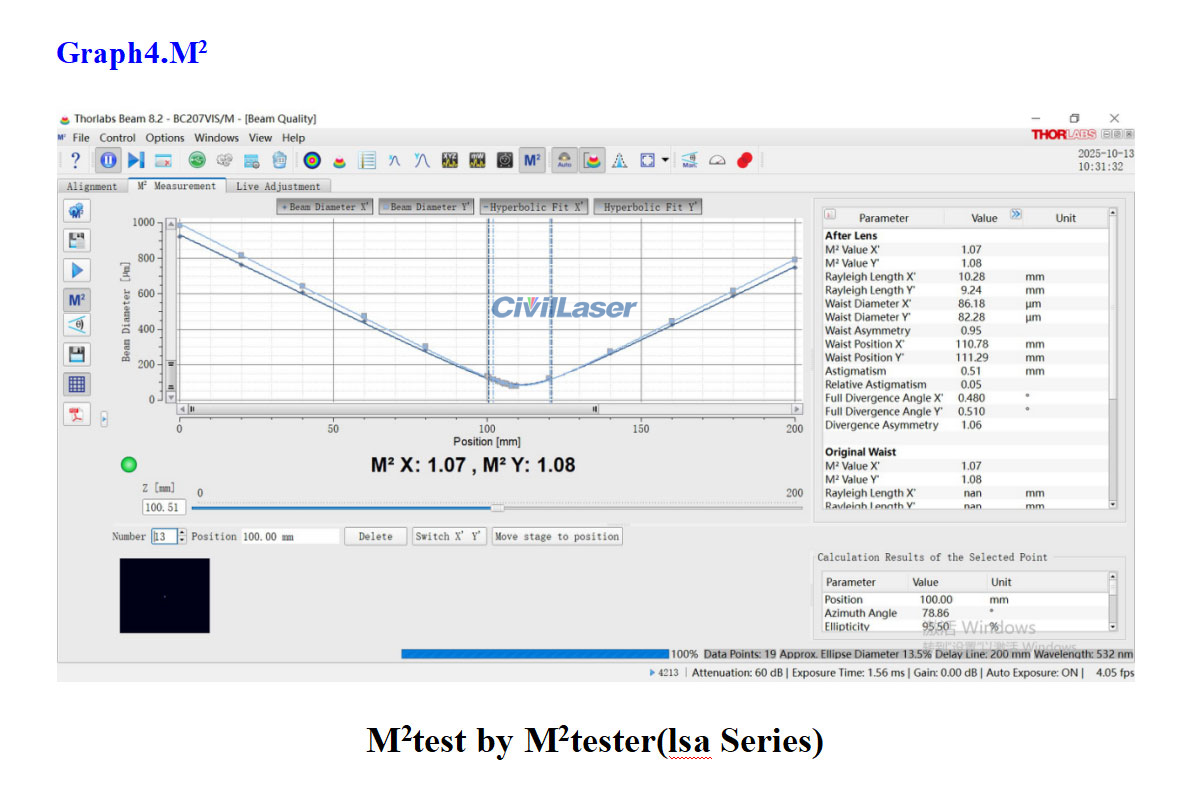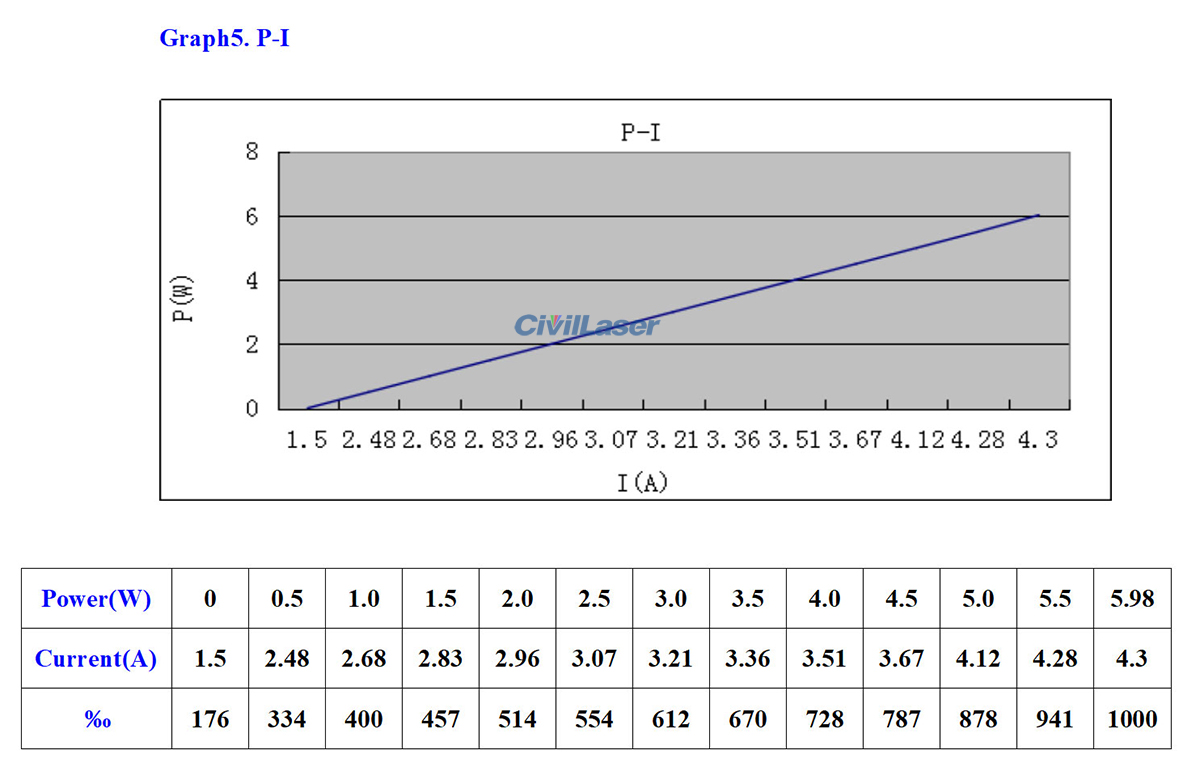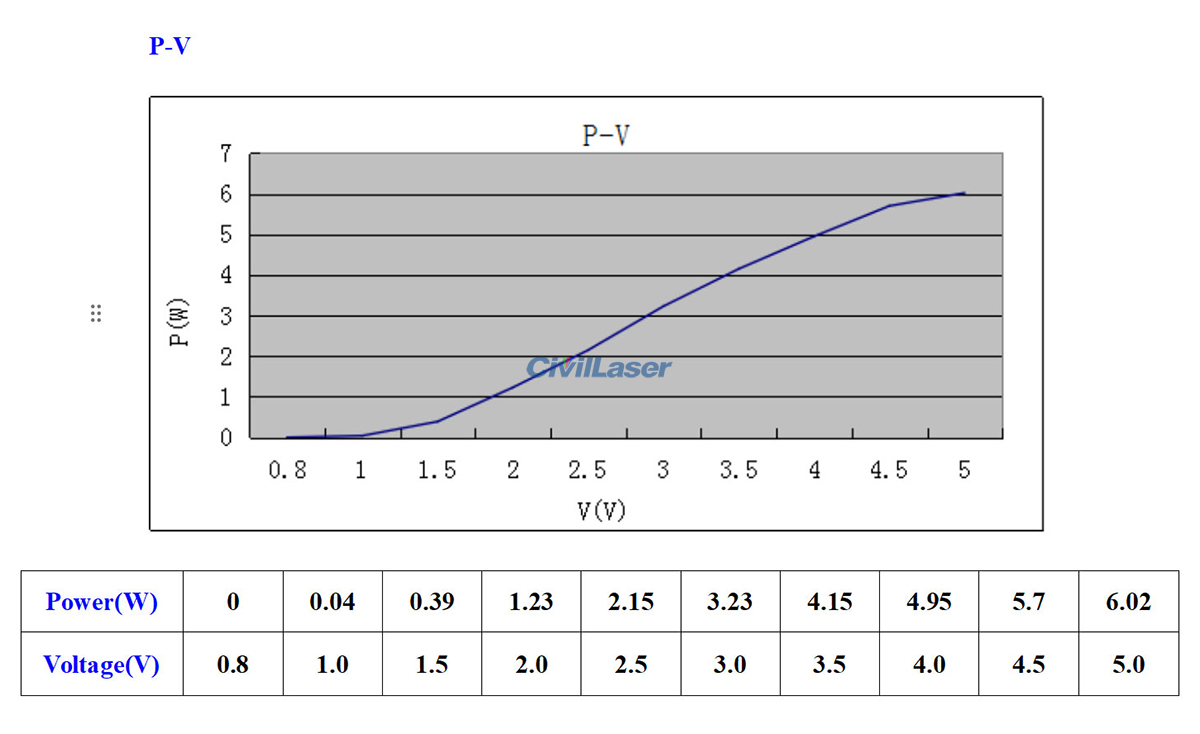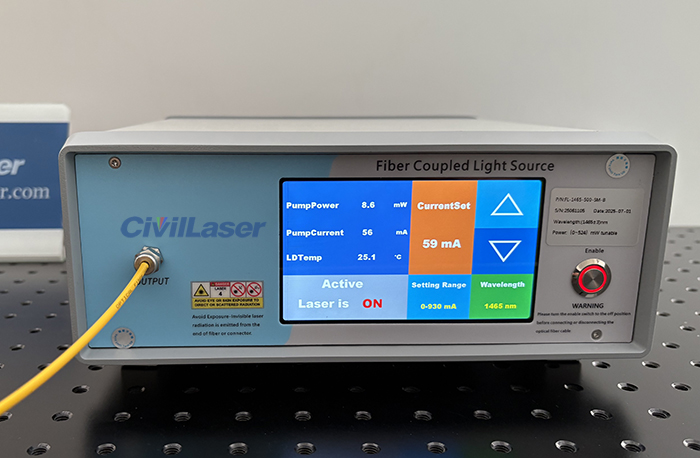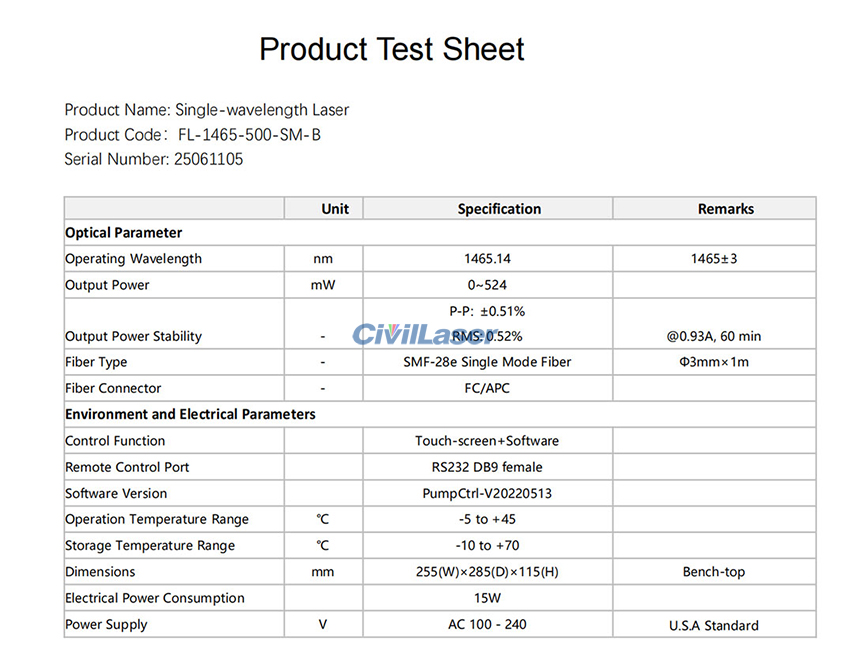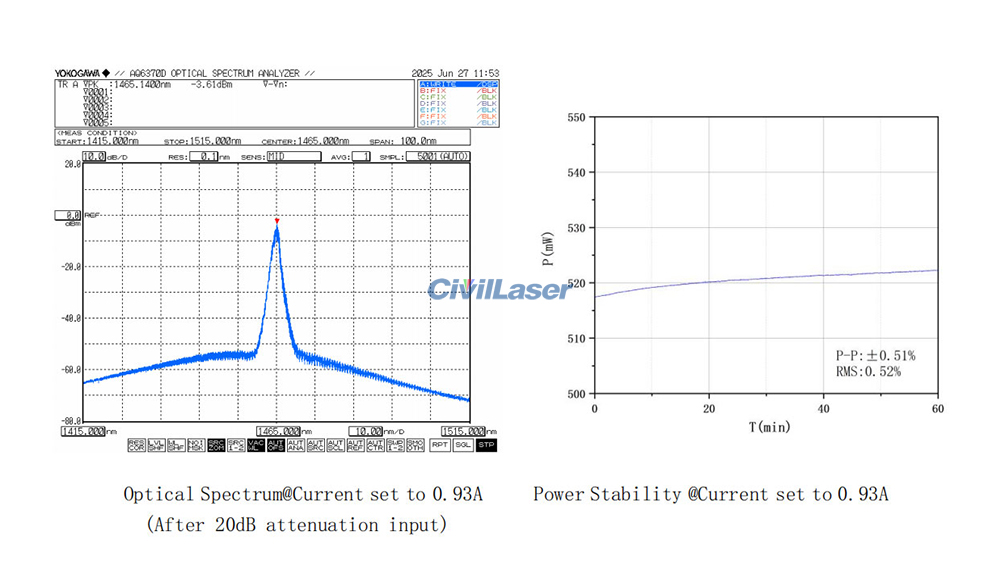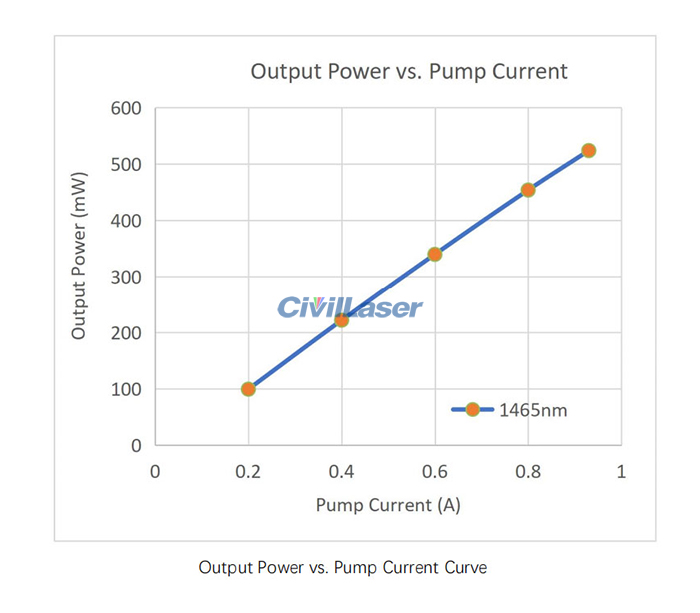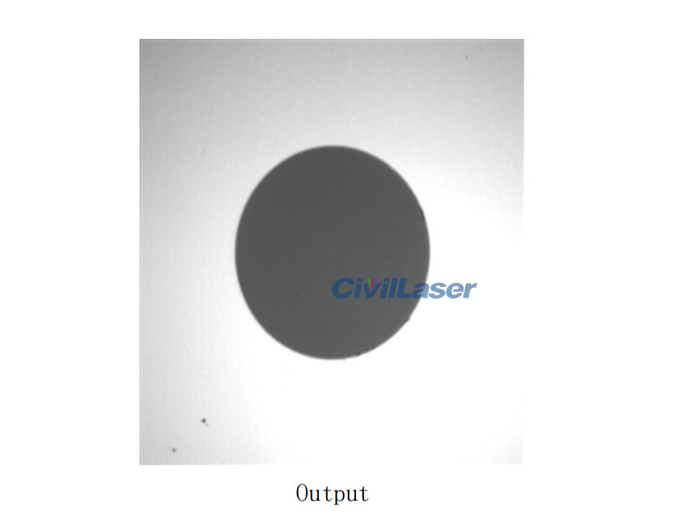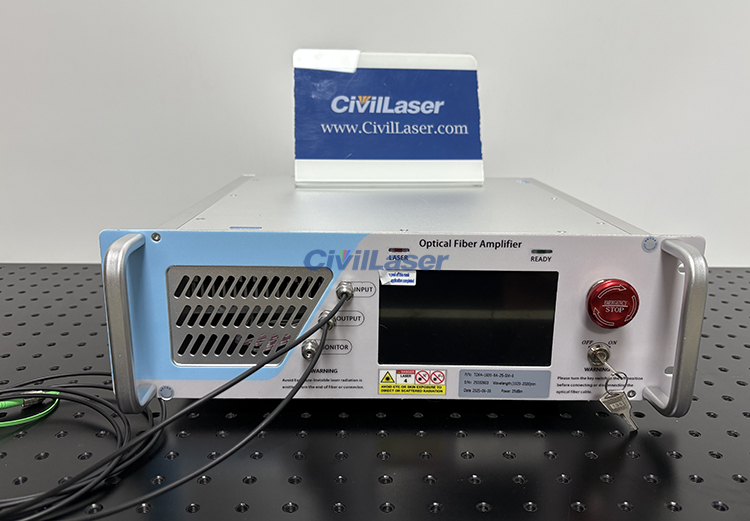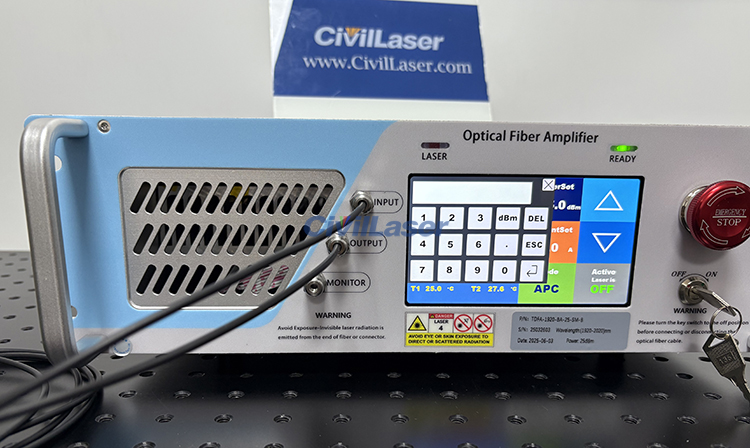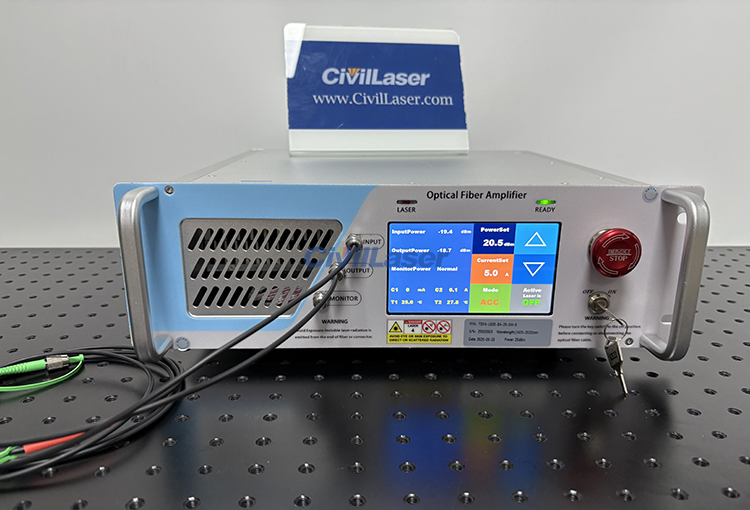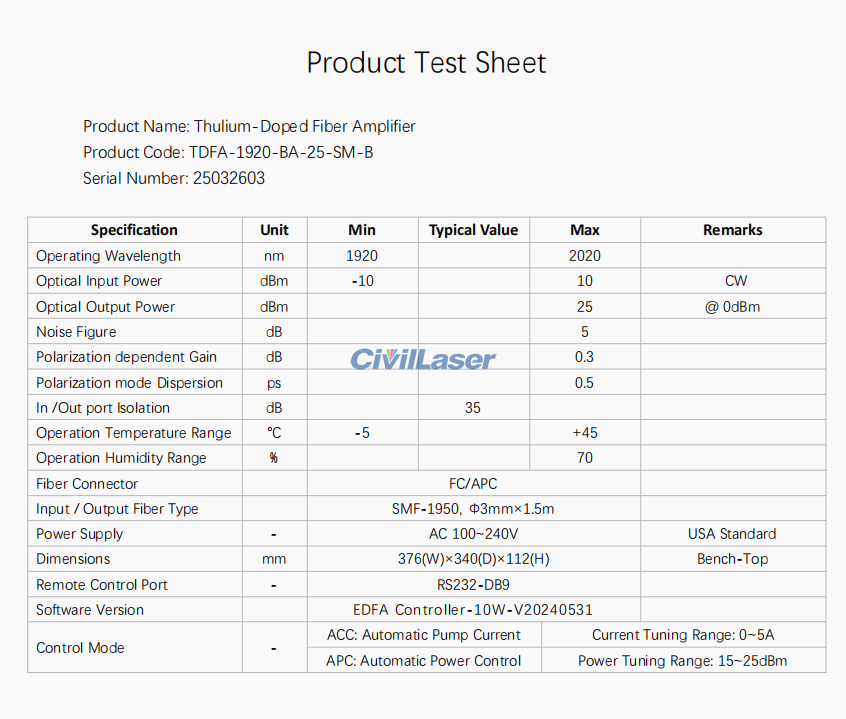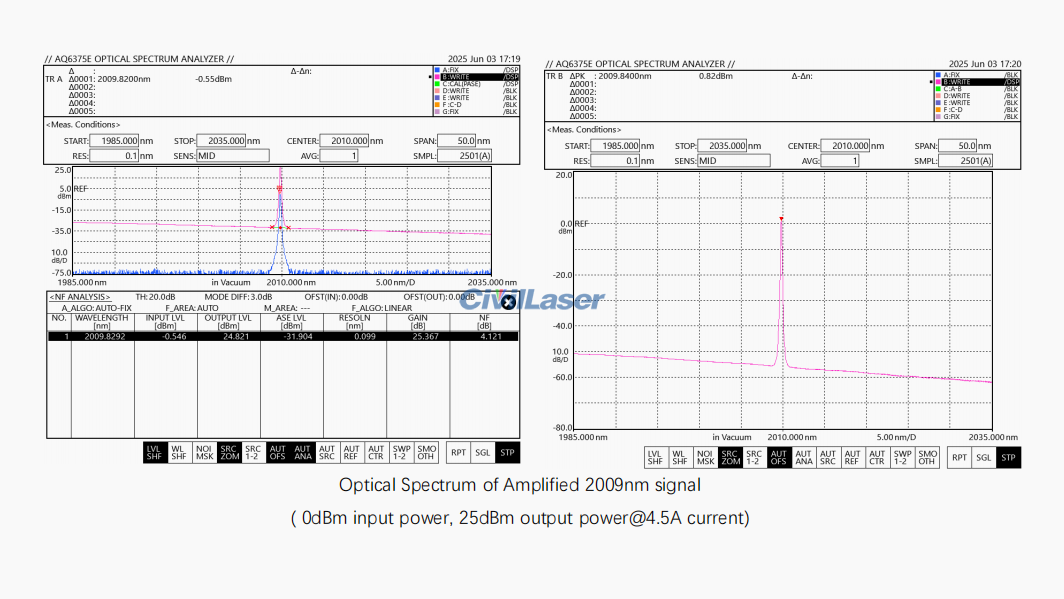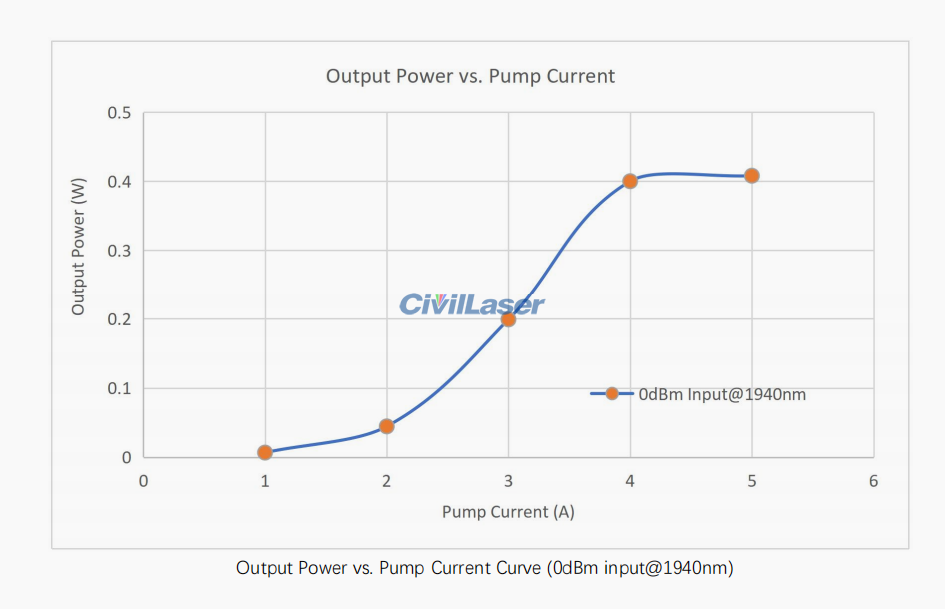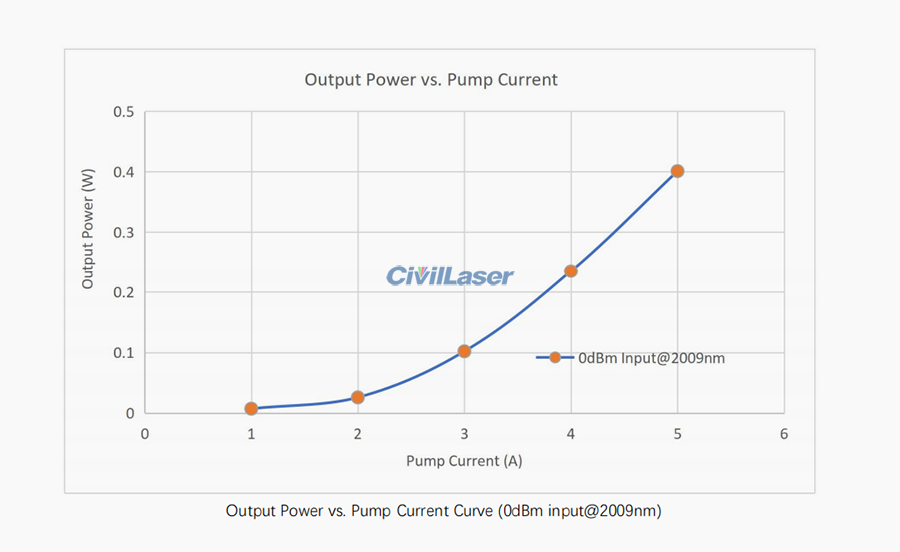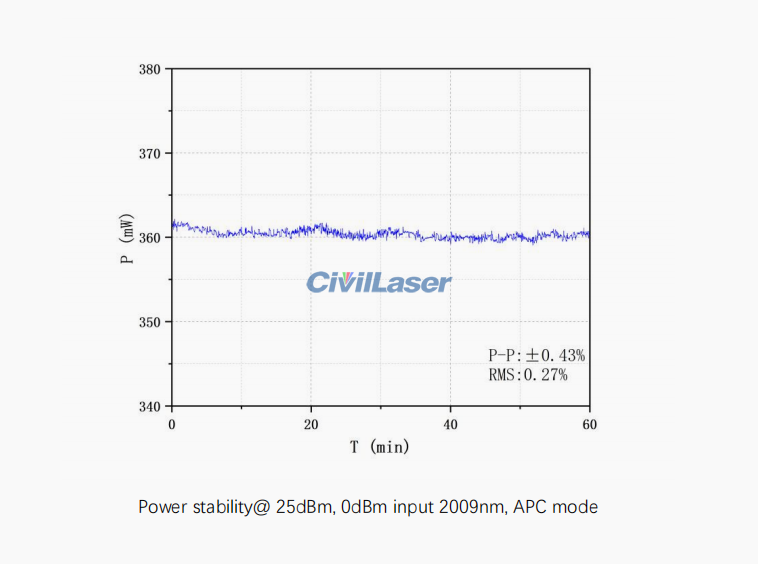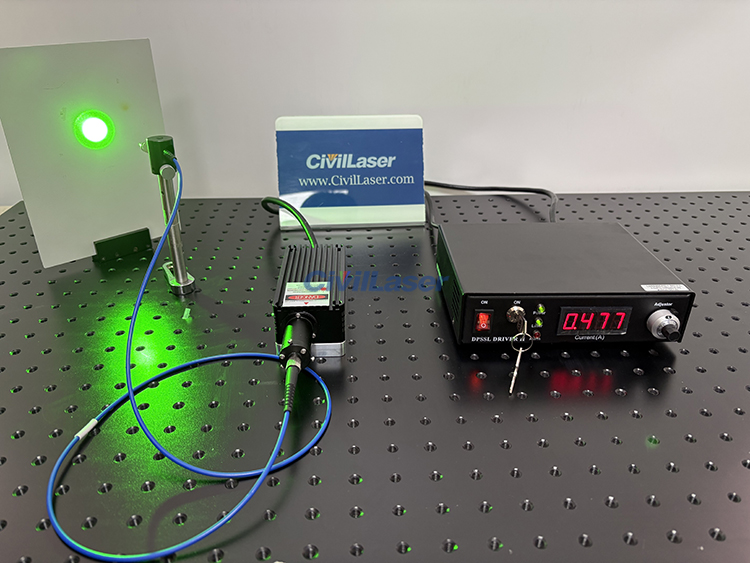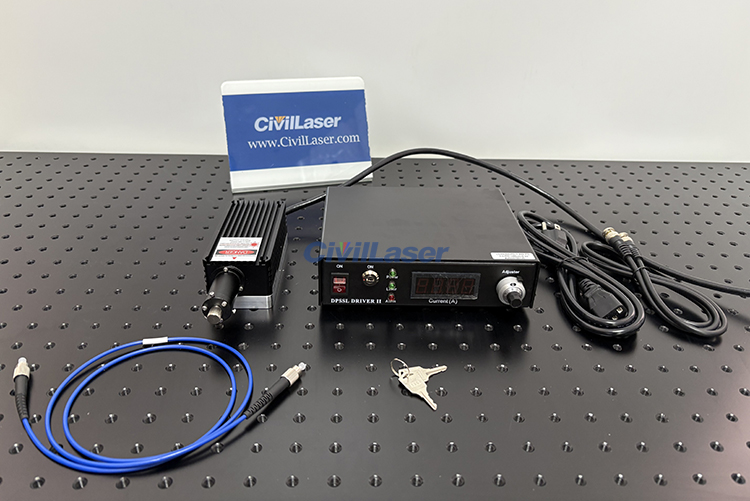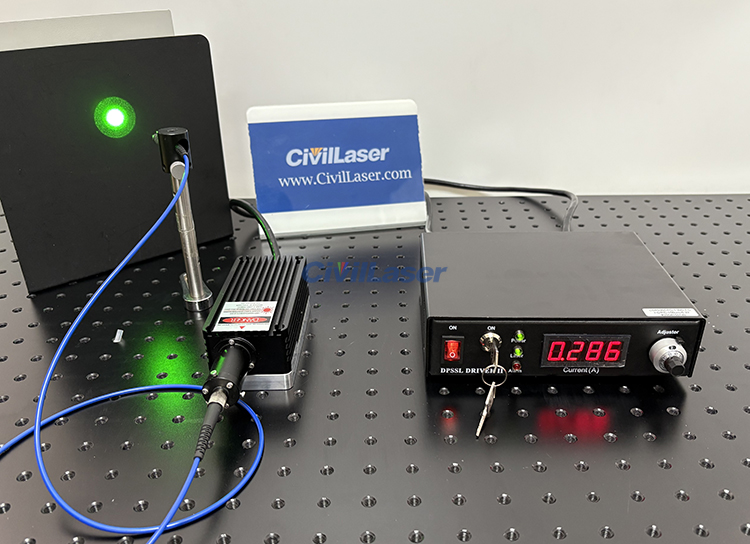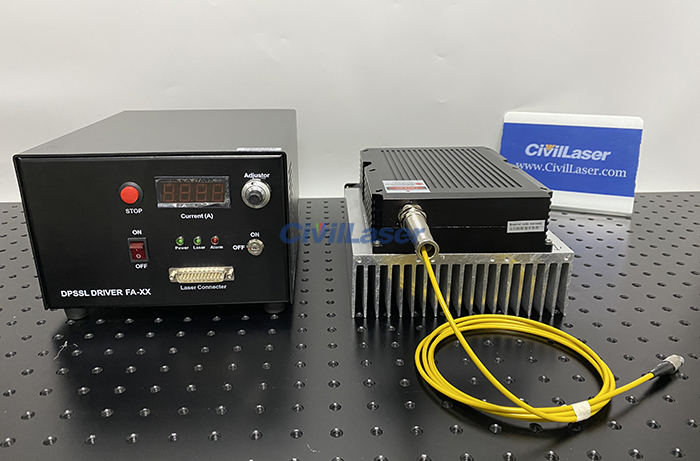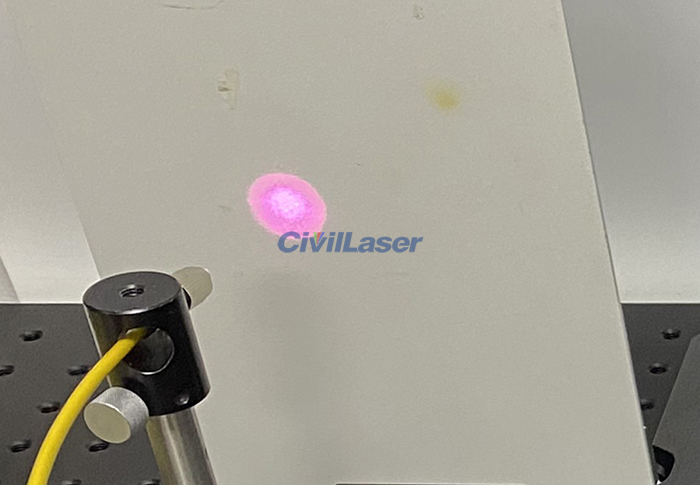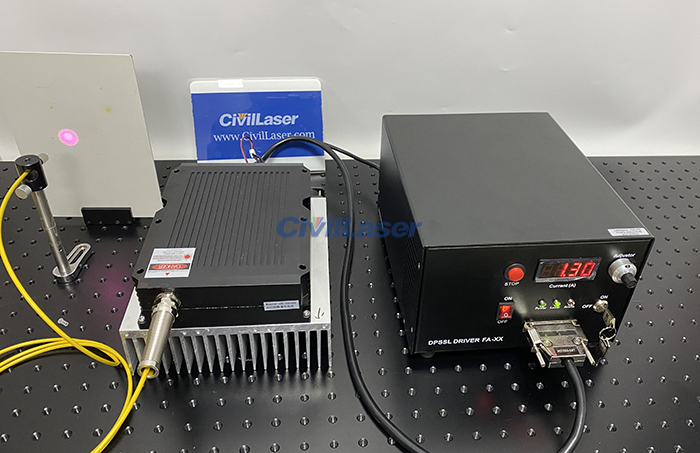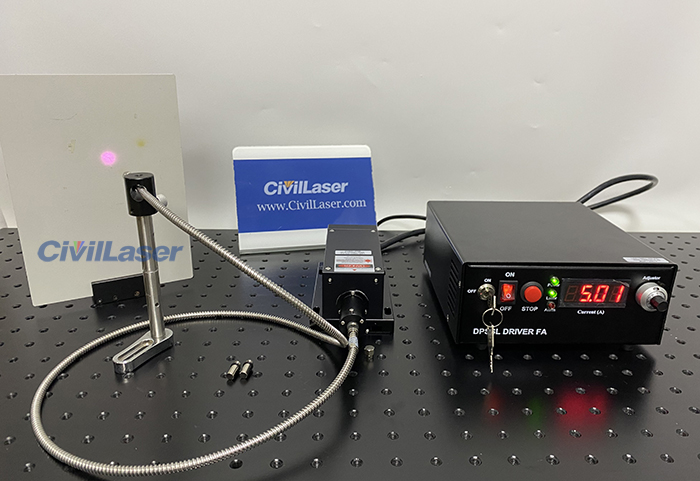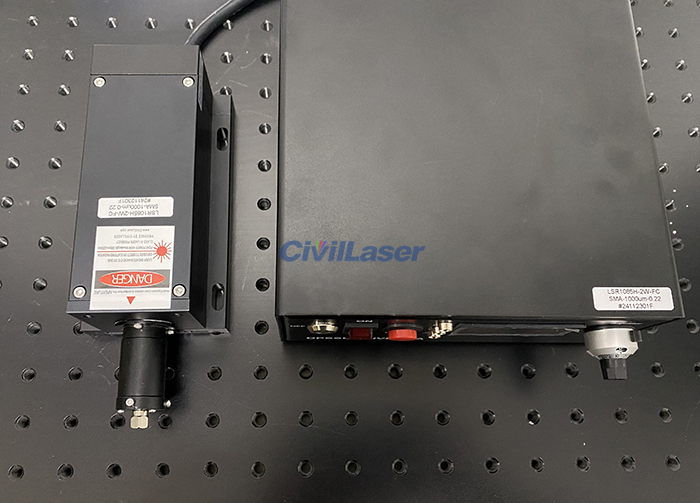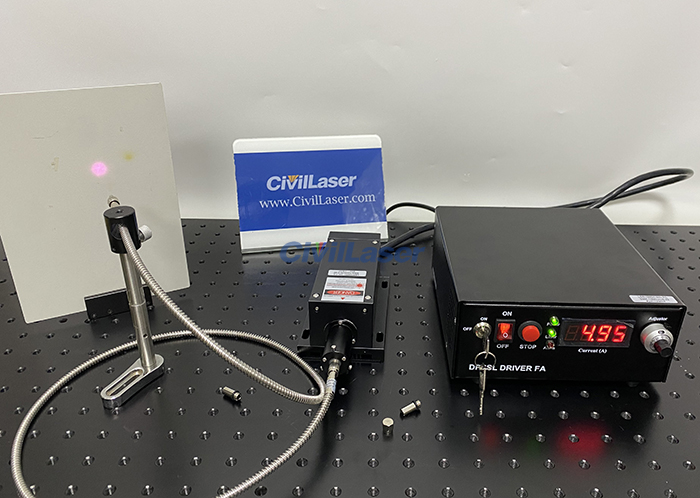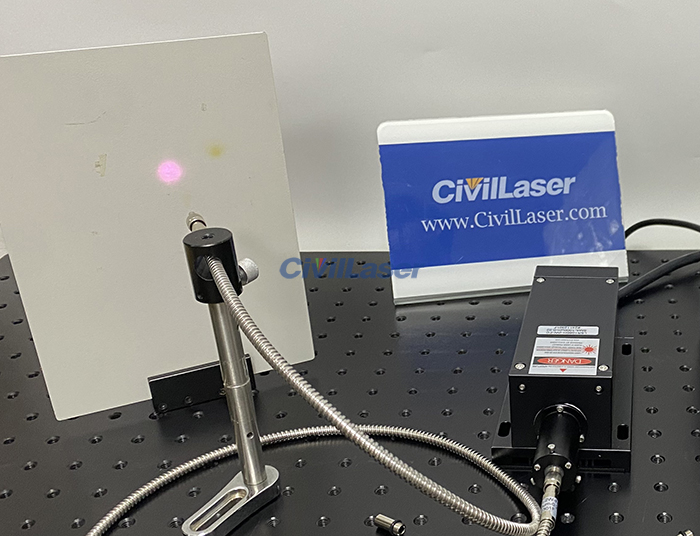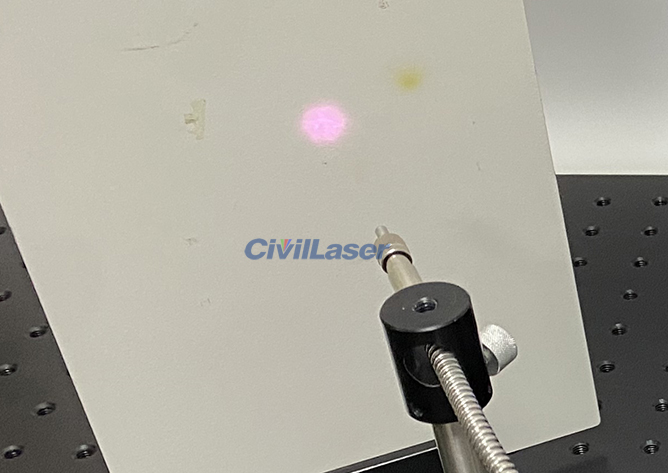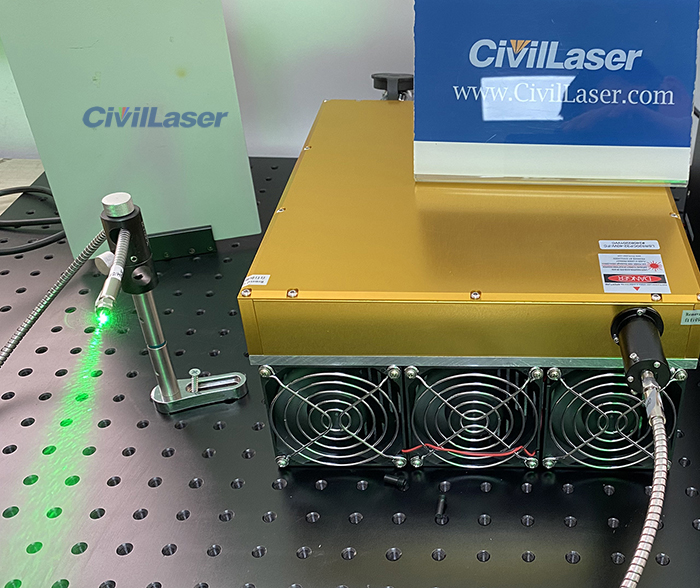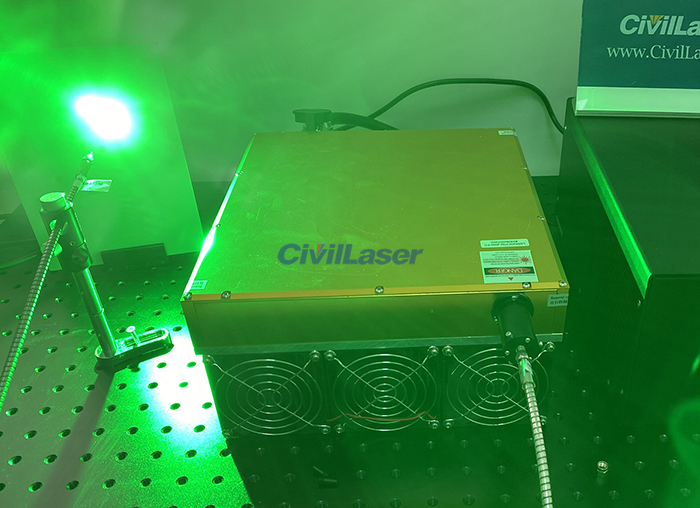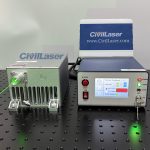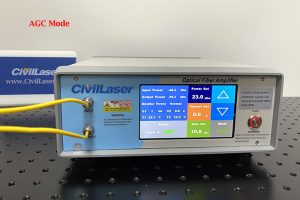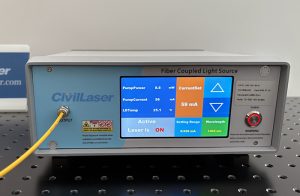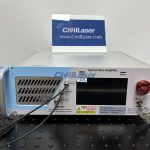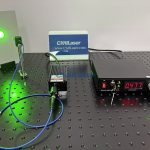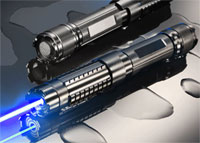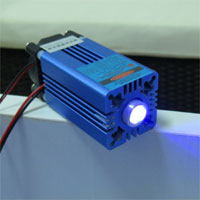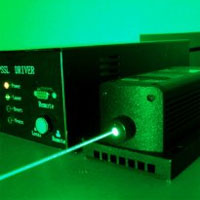532nm & 5W Power Define A New Standard For Solid-State Laser
All solid state 532nm green laser is made features of good beam profile, ultra compact, long lifetime and easy operating, which is widely used in collimation, laser medical treatment, scientific experiment, optical instrument, laser display, etc.
Today we are introducing a brand new 532nm 5W solid-state laser. This laser now uses a touchscreen power supply. The power supply has a built-in cooling fan.
Instructions for use:
Turn on the power switch. The ‘POWER’ light will illuminate. After the machine starts, it will automatically jump to the current adjustment page. Here, we can adjust the current value to adjust the output power. Click the ‘+’ and ‘-‘ buttons to the right of ‘Current’ to adjust the current. 1000 represents the full power current. The ‘X 50’ at the top represents an adjustment step of 50, and the ‘X 1’ in the second row represents an adjustment step of 1. The Current Feedback at the top of the panel represents the current operating current of the laser. After adjusting the current, click ‘RUN’ and simultaneously turn the key switch to ON. The laser will start working and output laser light. The ‘LASER’ light will illuminate. Click ‘STOP’ to stop the laser from working. The ‘LASER’ light will turn off.
Click the second button on the left side of the screen. This page shows the current operating status of the laser. When switching to analog modulation mode, click the settings icon in the lower left corner and enter the password.
The test report of this dpss laser system.
EYDFA-C-HP-BA-33-SM-B2 High Power Erbium-doped SM Fiber Amplifier
Erbium-doped fiber amplifiers (EDFAs) are optical signal amplification devices based on erbium-doped fiber, operating in the wavelength range of 1530–1565 nm, which coincides with the minimum loss window of optical fiber communication. Their core functionality involves exciting erbium ions (Er³⁺) using a 980 nm or 1480 nm pump light source, achieving all-optical amplification of the optical signal without photoelectric conversion. Since its introduction in 1985, the EDFA has become a core component of optical fiber communication. In 2022, institutions such as the China Information and Communication Technologies Group (CICT) further promoted its independent development, integrating the RS232 communication protocol for intelligent monitoring.
This is a C Band erbium-doped fiber amplifier. Here is a desktop type, customizable module fiber amplifier.
The working mode can be set to ACC or APC or AGC. Click the ‘Mode’ area to switch the working mode. In ACC mode, we cann set the operating current value. In AGC mode, we cann set the gain value. In APC mode, we cann set the power value. Use the up and down arrow keys on the right side of the screen to adjust the corresponding parameters. We can also click ‘Power Set’ or ‘Current Set’ or ‘Gain Set’ to enter the value you want. The amplifier can also be controlled by software.
1465nm 500mW Fiber Laser Source FL-1465-500-SM-B
The 1465nm 500mW single-mode fiber benchtop laser features an all-fiber integrated design, achieving stable output through high-precision doped fiber and semiconductor pumping technology. Its core structure consists of three key modules: a seed source module utilizing distributed feedback (DFB) technology; an erbium-doped fiber amplifier module achieving 500mW amplification through multi-stage pumping; and an intelligent temperature control module.
This is the single-mode fiber output. Desktop touch screen model, the parameters are visible on the screen and can also be adjusted. We can adjust the current directly on the screen. We can also set the current value directly. It also supports software control.
Utilizing high-stability single-mode fiber technology, it delivers a 1465nm output wavelength and 500mW power, offering excellent beam quality and suitable for applications in scientific research, medical treatment, sensing, and other fields. Its compact benchtop design supports plug-and-play operation and features intelligent temperature control and overload protection, ensuring continuous and stable operation. Compatible with OEM integration and customizable pulsed/continuous mode, it is an ideal light source for precision experiments and industrial testing.
This laser achieves high stability and low phase noise through optimized resonator design and high-quality optical components.
The test report of this 1465nm fiber laser.
New Touch Screen Model Fiber Amplifier 25dBm TDFA
This product uses advanced semiconductor laser pumping and rare earth gain fiber, combined with a dedicated integrated circuit chip, to achieve high stability, high gain, and low power consumption. The laser is coupled and output through a single-mode fiber, and the method of use is simple. It can be widely used in tests and experiments in the fields of optical communication, fiber laser, and fiber sensing.
Thulium-doped fiber amplifier (TDFA for short) can be used to amplify 2μ band laser signals in the power range of -10dBm~+10dBm. The saturated output power can reach up to 40dBm, and it is often used to increase the emission power of laser light sources. Desktop TDFA is convenient for experimental operation. Users can set parameters through the front panel. It can also provide more compact modular products to facilitate system integration.
Both desktop and modular TDFA can support host computer software control or serial port command control. Users can choose the TDFA model with appropriate parameters according to their own needs to achieve the best amplification effect. We can also provide customized products according to the specific needs of customers.
The test report of this 25dBm TDFA.
530nm 1800mW Fiber Coupled Laser, Safe and Efficient Optical Tool
CivilLaser 530nm 1.8W fiber coupled laser is a high-performance laser device designed for scientific research, industrial and medical applications. Adopting advanced 530nm green laser technology, it provides excellent beam quality and stability, ensuring accurate and efficient operation.
The 530 series 1800mW fiber-coupled laser is a high-performance industrial-grade laser light source designed for precision machining, scientific research experiments and medical applications. The laser uses advanced fiber coupling technology, with a stable output power of 1800mW, excellent beam quality and wavelength stability, suitable for a variety of scenarios such as material cutting, welding, spectral analysis and biomedical imaging. Its compact design integrates an efficient heat dissipation system to ensure the reliability of long-term continuous operation. The fiber output interface is compatible with standard SMA or custom fiber configurations, can be flexibly adapted to a variety of optical systems, and supports analog/digital modulation functions to meet users’ needs for precise control and fast response.
Based on high-power semiconductor laser (LD) or fiber laser technology, the 530nm 1800mW fiber-coupled laser achieves low-loss, high-uniformity laser transmission through optimized multimode fiber output, and its beam parameter product (BPP) is better than similar products. Its built-in intelligent temperature control module and overload protection circuit can effectively extend the service life and ensure safe operation. The device supports wide voltage input and multi-protocol communication interfaces (such as RS232, USB or Ethernet), which is easy to integrate into automated production lines or laboratory equipment. With high stability, long life and low maintenance cost, the 530nm series has become an ideal choice for industrial manufacturing, scientific research innovation and medical equipment.
CivilLaser’s 808nm 70W High Power Fiber Laser
Today we will introduce an 808nm 70W high-power fiber-coupled laser. The laser module generates a lot of heat. A heat dissipation module is installed at the bottom of the laser module, equipped with 3 cooling fans. When connecting the laser module and the laser power supply, there is a small white interface on the data cable, which is used to power the cooling fan and needs to be connected. The fiber is a 400um high temperature resistant fiber. One end of the fiber is fixed on the laser. The fiber coupling efficiency is about 85%, and the output power at the fiber end is 59W. Before turning on the machine, please wear infrared laser protective glasses.
The 808nm laser is an infrared laser. It is very weak when viewed with the naked eye, but the light spot can still be clearly captured with a camera.
In the field of modern scientific research, fiber lasers have become an indispensable and important tool. Choosing a fiber laser with stable performance and support for customization is crucial to the accuracy and innovation of scientific research results. In this regard, CivilLaser’s fiber lasers are undoubtedly the first choice of many scientific research institutions.
CivilLaser has many years of experience in laser R&D and manufacturing, and its fiber lasers are known for their excellent performance and stability. Whether used for high-precision experiments or long-running complex tests, CivilLaser’s fiber lasers can always maintain efficient and stable output, providing reliable data support for scientific researchers.
In addition, CivilLaser has a deep understanding of the diverse needs of scientific research work and provides flexible customized services. Whether it is wavelength, power, or interface design, CivilLaser can tailor solutions according to users’ specific needs to help scientific research institutions better achieve experimental goals.
It is worth mentioning that CivilLaser’s fiber lasers have been widely used by many well-known scientific research institutions around the world. Its products are not only leading in technical performance, but also win the high trust of users with high-quality after-sales service.
If you’re looking for a reliable, customizable, industry-proven fiber laser, look no further than CivilLaser. We are committed to providing excellent fiber laser products to scientific researchers around the world and working with you to promote scientific progress.
1085nm 2W IR DPSS Laser Coupled Fiber Output
Today our laboratory tested a 1085nm 2W infrared fiber-coupled laser. There are 3 working modes to choose from: CW/TTL/Analog on the back of the power supply.
The laser head and power supply are labeled with model numbers. Please check whether the model numbers are consistent.
1085nm is an infrared laser, and the spot is invisible to our naked eyes. The light spot can be captured by the camera. We can also use an infrared detection card to observe the laser spot. Through the sponge test, we can see that its power is high and smoke will come out when touched.
385nm 180mW Lab Laser System Operation Video
385nm semiconductor lasers are based on the photoelectric effect of semiconductor materials. They use electrical excitation to make electrons in semiconductors transition and release light energy, thereby generating lasers. Its working material is semiconductor material, which has the advantages of small size, light weight, high efficiency, and long life. By optimizing the design of the resonant cavity, the 385nm 180mw laser can provide a near-Gaussian distributed beam with concentrated energy and high beam quality. In the field of scientific research, 385nm semiconductor lasers can be used for experiments such as spectral analysis, laser holography, and cell sorting, providing precise light source support for researchers.
This 385nm 180mW semiconductor laser. There are three working modes of CW/TTL/Analog on the back of the power supply to choose from. Rotate the ‘Adjustor’ knob on the power supply to adjust the current and thus the laser output power. This is the free space output mode, customizable for fiber coupling.
We observe the 385nm spot on the black background plate.
385nm semiconductor lasers have the advantages of stable wavelength, adjustable output power, and high beam quality. They have broad application prospects in the fields of ultraviolet curing, scientific research experiments, and industrial applications.
40000mW Strong Laser Beam 520nm Green Lab Laser System
As an important part of modern science and technology, fiber-coupled lasers play a key role in many fields with their high efficiency, stability and flexibility. Among them, the 520nm 40W fiber-coupled laser has become a leader in many applications with its unique wavelength and powerful power.
The 520nm 40W fiber-coupled laser belongs to the visible light band, which makes it perform well in applications that require a specific color light source. At the same time, its power output of up to 40 watts ensures powerful laser energy and is suitable for a variety of high-demand processing and measurement tasks.
This is a 520nm 40W high power green laser. The bottom of the laser head has a heat sink, which is an aluminum heat dissipation module with 3 fans. There are 3 working modes to choose from on the back of the power supply: CW/TTL/Analog. The regulator button on the power supply is used to adjust the operating current, thereby adjusting the laser output power.
Fiber-coupled lasers efficiently couple the laser beam generated by the laser diode into the optical fiber through precise fiber coupling technology. This process requires precise focal length adjustment and angle control to ensure that the beam can enter the optical fiber without loss and be stably transmitted along the path of the optical fiber. Fiber coupling technology not only improves the efficiency of laser transmission, but also enables the laser to maintain stable performance in complex environments.
Laser output after installing the optical fiber.
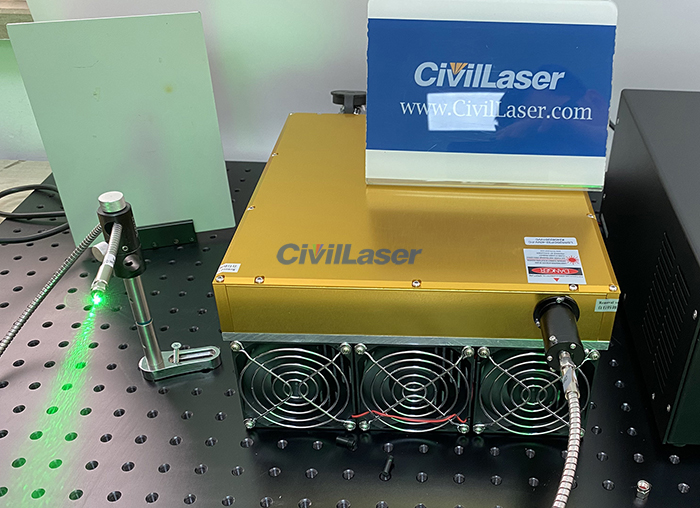
With its unique wavelength and powerful power, the 520nm 40W fiber-coupled laser has shown a wide range of application prospects in many fields. Its high efficiency, stability and flexibility make it an indispensable and important tool in modern technology. With the continuous advancement of technology and the continuous expansion of application fields, it is believed that the 520nm 40W fiber-coupled laser will play a greater role in more fields.
430nm 1W Semiconductor Laser Operation Video
Semiconductor lasers, also known as laser diodes, are lasers that use semiconductor materials as working materials to produce stimulated emission. Among the many semiconductor lasers, 430nm 1W semiconductor lasers have become a highly sought-after product in the market due to their unique technical characteristics and wide range of applications. This article will explore in depth the technical characteristics, application fields and market prospects of 430nm 1W semiconductor lasers.
The 430nm 1W semiconductor laser has a series of remarkable technical characteristics. First, its small size and light weight make it easy to integrate in various application scenarios. Secondly, the laser has high electro-optical conversion efficiency, long working life, low power consumption, and can be directly electrically modulated, making it easy to achieve optoelectronic integration with various optoelectronic devices. In addition, the 430nm wavelength gives the laser unique advantages in specific application fields, such as optical communications, sensing technology, and biomedicine.
Demonstration effect of 430nm 1W laser in indoor during daytime.
The 430nm 1W semiconductor laser has become a highly regarded product in the market with its unique technical characteristics and wide application fields. With the continuous advancement of technology and the continuous expansion of the market, this laser is expected to play an important role in more fields and make greater contributions to economic development and social progress.












